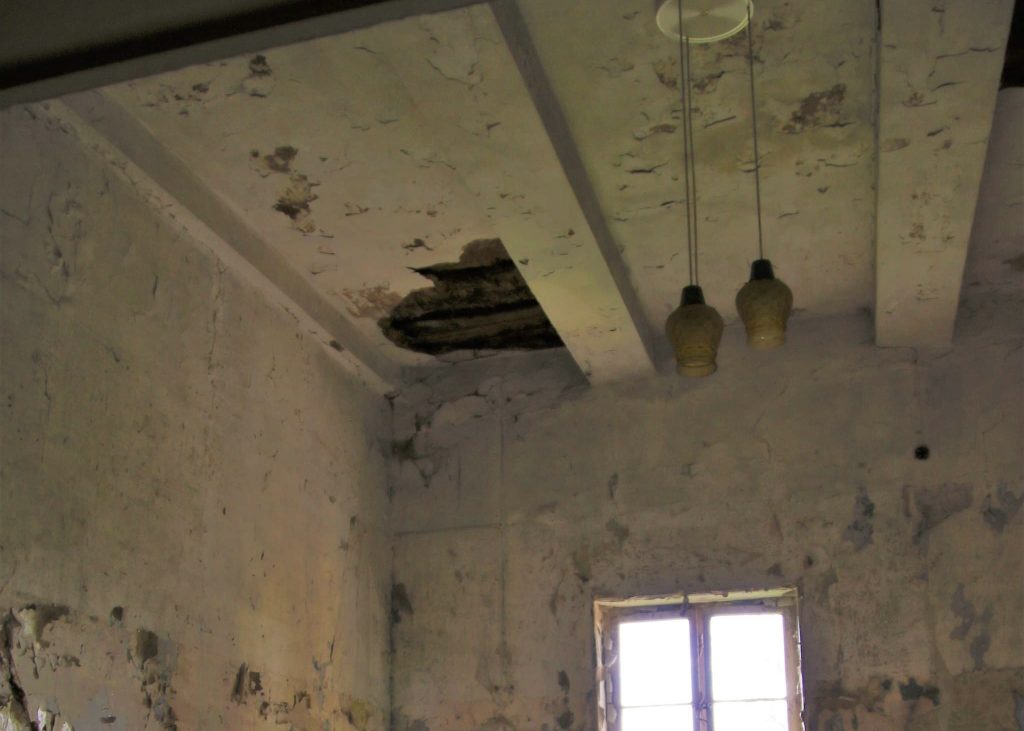One of the essential things homeowners should learn is how to fix ceiling cracks. They often don’t seem like a big problem, and homeowners ignore them. Unfortunately, these cracks could lead to more expensive repairs like replacing the entire roof.
Ceiling cracks could happen because of poor installation or aging. Therefore, when fixing the problem, avoid DIYs and ensure you hire professionals to do the job. You should also choose quality materials that last longer and reduce maintenance costs.
Before taking you through the steps of fixing ceiling cracks, we will first mention the causes of the cracks. It will help you take better care of the ceiling to avoid more costs.
Let’s get straight into it.
Causes of Ceiling Cracks
Your ceiling can crack due to various reasons, including the following:
- Aging
Roofs and ceilings are made to last a long amount of time, but they have an expiry date. If your ceiling is over 50 or 60 years old, it could show signs of aging, with the major one being cracks. However, this depends on the material used on the ceiling.
Although the cracks start with small lines, they could lead to bigger openings and spread to other parts. The ceiling holds the roofing structure, and the weakening of the system could lead to a collapse.
- Moisture Damage
Water causes slow but sure damage to the entire roof. If shingles are missing on your roof, moisture sips through the openings into the roofing system down to the ceiling.
When the ceiling material sips water, you will notice the lines of weakening, which are the ceiling cracks. When repairing, first fix the missing shingles and then the cracks. Failure to deal with the shingles will transfer the same problem to the new ceiling.
- Heavy Roof
The cause of a heavy roof is poor installation, where the roofer stacks many shingles on the system than the expected amount. The shingles weigh down the ceiling and could cause sagging.
When they are too heavy, they weaken the ceiling and cause cracks. Also, when there is weak roof support, most roof weight will go to the ceiling and cause cracking.
- Foundation Problems
Having a problematic foundation can be scary, but it is repairable. The strength of your foundation affects the entire home, and its weakness can lead to ceiling problems. Call a professional to inspect and know how to fix cracks in ceiling structures.
Types of Ceiling Cracks
Most homeowners think of cracks as a straight line or a small zigzag. However, they are of different types.
- Spider Web Cracks
Spider cracks are characterized by a center point and a crack that spreads out in different directions. A small spider-web crack might not cause too much worry, although you should repair it. Big spider-web cracks indicate a significant structural problem and should be fixed immediately.
- Cracks Along the Edges
Cracks along the edges are common, and they primarily result from settling. They are not very alarming but ensure you mark their starting and endpoint to monitor a spread and repair.
- Vertical Cracks
Be wary of cracks that run along with the ceiling then downwards. They are a sign of a weak wall, the weakening of the foundation by an earthquake, or a house settling. Note the size of the crack and call a specialist to fix it.
How to Fix Cracks in the Ceiling
Now that you know the causes of ceiling cracks, you can quickly fix them. However, ensure you first deal with the cause before fixing the ceiling to prevent future cracking. Here is a simple guide to fixing your roof.
- Clean the Cracked Area
Cleaning the cracked area helps you notice any other small cracks that the paint could be covering. Since you will loosen dust and paint, cover the floor and the couches with fabric to protect them.
Use a ladder to help you access the ceiling. However, be careful with how you use the ladder. Ensure it is strong enough to carry your weight and have someone hold it to avoid accidents. Using a drywall knife, scrape away the painting from the ceiling.
- Apply Drywall Tape on the Crack
Since the drywall tape is adhesive, it sticks firmly to the ceiling. You should place it at the center, directly over the crack. Also, apply only one layer of the tape but go over it several times using a rolling pin.
- Use Five-Minute Mud to Patch the Crack
Mix the mud with lukewarm water and mix using a stick or a brush. You can also purchase mud with a longer drying time, although you will wait longer. Wet the ceiling with water before applying the mud. It helps the mud to adhere and hold onto the area well. Note that the mud won’t stick to dust, oil, or mold.
Use a putty knife to apply a single layer of the mud over the crack. Ensure you apply the mud in the same direction and cover all the mesh tape. Also, you should apply quickly because it dries fast.
Sand the first layer of mud and apply a second thin coat. Also, ensure you fully cover the mesh tape and apply the mud in the same direction as the first one. Give the area about 30 minutes to dry fully.
- Finishing Up
Your crack is sealed, but that part of the ceiling looks different from the other areas. You can sand the mud using a sanding sponge and a back and forth motion. Now that it is even with the rest of the ceiling, the next step is to paint.
Choose a similar color with the rest of the ceiling to cover the repaired area. The best way to ensure the paint is the exact one is using the remains of the one the contractors used when painting the ceiling.
Final Words
Your ceiling can last for many years when you know how to fix cracks on ceiling structures. However, most cracks are complex and require an expert to establish their source. The good news is that our experts at Roof Master can help you find the cause of the cracks and provide the best solution to transform your ceiling space.
Contact us to discuss your ceiling repair project with our roofing experts.



